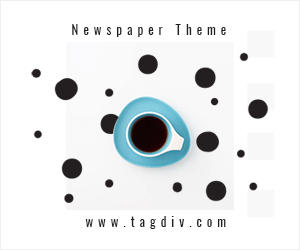Navigating the complex terrain of global politics often feels like deciphering an intricate code.Two key terms, notably relevant when analyzing countries like pakistan, regularly surface: “hard state” and “soft state.” But what exactly do they mean, and how can you definitively tell which label fits?
Forget dry theory and convoluted definitions.DAWN.com helps unpack these crucial concepts with a practical lens. In this listicle,we’ll explore 3 concrete indicators that distinguish a hard state from a soft one. By the end, you’ll gain a clearer understanding of these models of governance and be better equipped to analyze the strength, resilience, and effectiveness of nation-states facing diverse challenges. LetS dive in and demystify the hard and soft realities of the modern world.
1) The Echo Chamber Effect: How social media reinforces pre-existing beliefs, creating “hard” echo chambers of unwavering opinion and “soft” ones where nuance struggles to penetrate
Imagine social media as a hall of mirrors, reflecting only what you already think. This phenomenon, known as the echo chamber effect, is amplified online. “Hard” echo chambers are like impenetrable fortresses, where dissenting opinions are not just disagreed with, but actively silenced or excluded. Members are intensely aligned, creating a sense of absolute certainty, and leaving zero room for doubt. In contrast, “soft” echo chambers are more insidious.Here, opposing viewpoints aren’t necessarily absent, but are presented with such frequency and bias that they are viewed with hostility. The result? A gradual erosion of critical thinking and an inability to meaningfully engage with perspectives that challenge pre-conceived notions. It’s a place where nuance goes to die.
The consequences are notable as these chambers fuel political polarization and social fragmentation, because opposing arguments are de-legitimized by selective exposure. In “hard” echo chambers, information is filtered in such a way that users are primarily exposed to information confirming their views, which is not the case in “soft” chambers where arguments are constantly being challenged. Let’s see some more differences.
| Feature | Hard Echo Chamber | Soft Echo Chamber |
|---|---|---|
| Viewpoint Diversity | Almost None | Limited, Biased |
| Critical Thinking | Highly Suppressed | Diminished |
| Engagement with Opposing Views | Outright Rejection | Hostile Scrutiny |
| Certainty Level | Absolute Conviction | Distorted Reality |
Navigating these digital spaces requires a conscious effort to break free from the confines of your own echo chamber. Consider seeking diverse sources of information such as:
- Independent News outlets
- Academic Journals
- Direct Engagement with Differing Viewpoints
2) reimagining Resilience: Exploring how communities can cultivate ”soft” resilience through empathy and adaptable systems, contrasting with the ”hard” resilience of rigid infrastructure and top-down control
Imagine resilience not as a concrete wall standing firm, but as a willow tree bending gracefully in the storm. “Soft” resilience embraces this principle, focusing on human connection, local knowledge, and adaptive strategies. It’s about fostering a sense of community where individuals understand and support each other, creating a safety net woven from empathy. Rather of imposing solutions from above, soft resilience empowers communities to identify their own vulnerabilities and collectively devise flexible responses.This contrasts sharply with the “hard” resilience often seen in centralized, top-down approaches, where robust infrastructure and hierarchical control are deemed paramount.But, are these approaches truly effective when the unforeseen always seems to find a way through the cracks?
The shift towards soft resilience requires a re-evaluation of our priorities.It calls for investing in social capital – the bonds of trust and cooperation that hold a community together – rather than solely in physical assets. Think of educational programs that teach conflict resolution and disaster preparedness,or initiatives that promote cross-cultural understanding and empathy.These may seem less tangible than a sea wall, but they can be far more effective in fostering long-term resilience. The table below highlights key differences:
| Feature | Hard Resilience | Soft Resilience |
|---|---|---|
| Focus | Infrastructure | Community |
| Approach | top-down | Bottom-up |
| Strategy | Rigid control | Adaptive capacity |
| Value | Efficiency | Empathy |
3) The Illusion of Control: Examining the tension between the “hard state’s” promise of order and the “soft state’s” acceptance of complexity, challenging the idea that control is always desirable or achievable
The allure of the ‘hard state’ lies in its promise: a predictable, orderly existence achieved through unwavering rules and stringent enforcement. But is this vision of absolute control truly attainable,and more importantly,is it desirable? History is littered with examples of regimes obsessed with suppressing dissent and micromanaging society,often with disastrous consequences. These attempts at complete control frequently backfire, creating resentment, stifling innovation, and ultimately proving unsustainable. The “soft state,” on the other hand, acknowledges the inherent messiness of human affairs and embraces a more flexible approach. This isn’t about weakness; it’s about recognizing that complex systems are frequently enough best managed through adaptation and negotiation, not brute force. Consider:
- Economic Policy: Rigid central planning versus market-based approaches.
- Social Harmony: Suppressing diverse voices versus fostering constructive dialogue.
- Crisis Management: Top-down directives versus collaborative problem-solving.
The tension between these two models forces us to confront a fundamental question: are we willing to sacrifice freedom and innovation in pursuit of absolute order? The “soft state” suggests that complexity, while challenging, can be a source of strength. It posits that a society that embraces adaptability and welcomes diverse perspectives is ultimately more resilient and prosperous than one that clings to the illusion of total control. the table below illustrates some key contrasts:
| Factor | Hard State | Soft State |
|---|---|---|
| Governance | Centralized | Decentralized |
| Adaptability | Low | High |
| Innovation | Stifled | Encouraged |
| Resilience | Fragile | Robust |
In Summary
So, that’s a glimpse into the hard and soft landscapes of power, as reflected in the news and opinions shaping DAWN.com. It’s a constant negotiation, a push and pull between the tangible force of policy and the more elusive influence of perception. Thinking critically about both – the hard state’s actions and the soft state’s narrative – is key to understanding the evolving story of Pakistan and its place in the world.Now, the narrative continues…what chapter will YOU help write?



